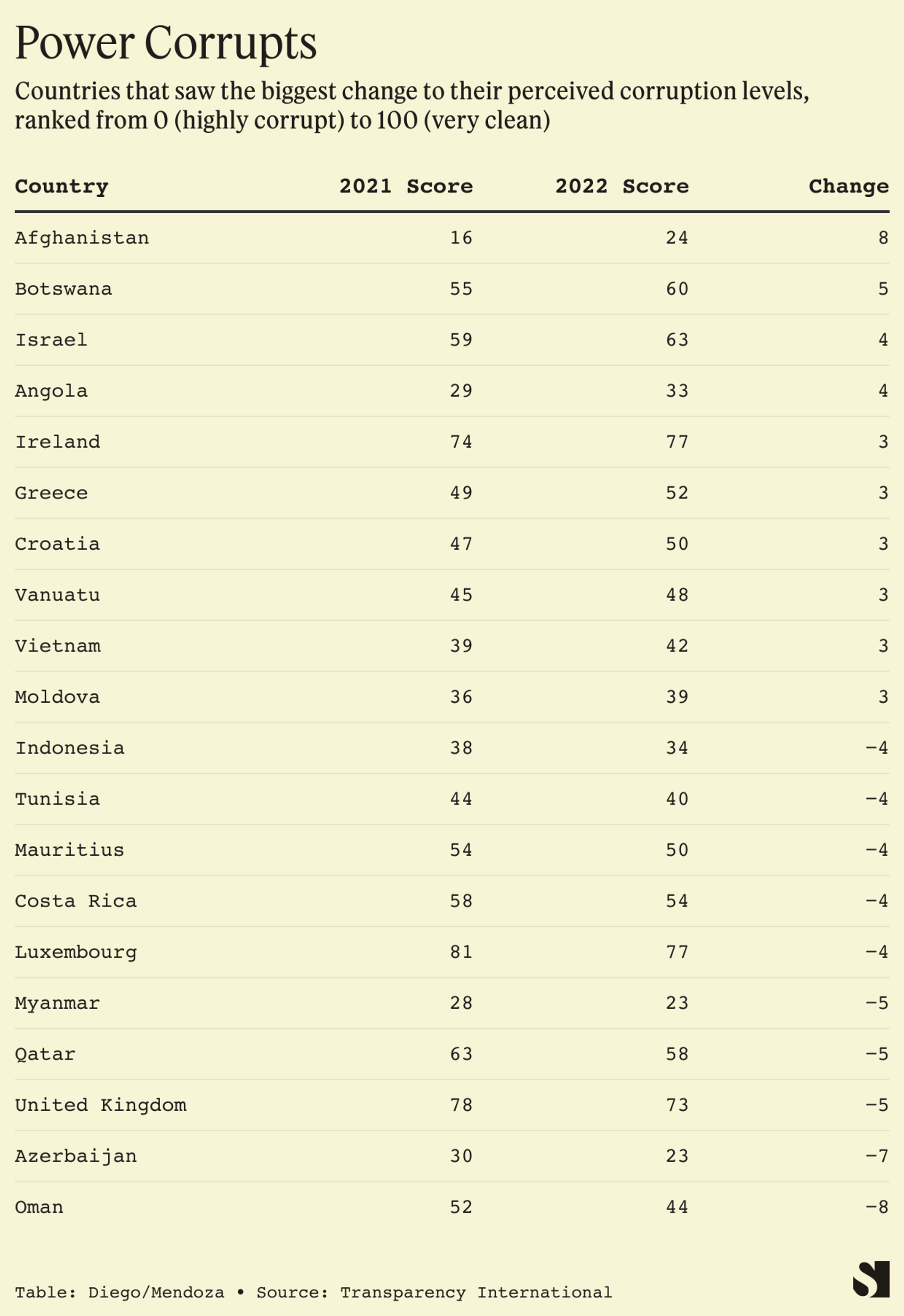The Numbers
In 2022, global corruption levels remained at a standstill for the 11th year straight, with 95% of countries making little to no progress in the fight against corruption, according to a new report from Transparency International — a leading anti-corruption organization.
The organization’s annual Corruption Perceptions Index, released Tuesday, ranked 180 countries and territories by measuring their perceived levels of corruption in the public sector, with a score of 0 indicating a highly corrupt government and a score of 100 indicating a very clean government.
Here are the key takeaways from the report:
- Denmark had the highest score of 90, followed closely by Finland and New Zealand at 87.
- Somalia had the lowest score of 12, followed by other conflict zones, including Syria and South Sudan at 13.
- The UK (73) and Qatar (58) hit historic lows on the corruption index.
- 31 countries saw an increase in perceived corruption levels.
- 25 countries saw a decrease in perceived corruption levels.
- Sub-Saharan Africa maintained the lowest average score at 32.
- Western Europe maintained the highest average score at 66.

In this article:
Know More
While Western Europe and the European Union’s score remained high, Transparency International noted that corruption levels did not improve as governments scrambled to respond to the invasion of Ukraine and the subsequent energy crisis.
Within the region, Hungary’s score remained the lowest at 42, with the E.U. freezing funds last year, citing Prime Minister Viktor Orban’s failure to tackle corruption and protect human rights.
The Americas saw some of the biggest increases in corruption levels last year, though the regional average still ranks at 43. Cuba (45), Guatemala (24), and Nicaragua (19) all reached historic lows while Honduras (23) and Haiti (17) saw their rankings significantly decline since 2017. Transparency International cited economic stagnation coupled with an increasing affinity toward authoritarianism for the rise in corruption levels.
The United States (69) improved its score by two points since 2021, though it remained lower compared to its score under the Obama administration.
Afghanistan saw the most improvement in corruption levels —increasing its score by eight points — despite the fact that corruption in the Afghan government enabled the Taliban’s takeover in 2021.

The UK saw one of the biggest slides on the index, falling by five points to 73. While it is difficult to determine the specific factors for the decline, experts note that political upheaval and a battered economy tarnished the country’s reputation as a stable democratic institution.
Room for Disagreement
Dan Hough, a political scientist at the University of Sussex, argued in a 2016 Washington Post article that the Corruption Perception Index is not the gold-standard for ranking corruption levels.
He wrote that simplifying corruption to a single level distorts the extensive nature of corruption among all levels, both in the public and private sectors. He also noted that the index rated the perception of corruption, which is difficult to translate to actual corruption levels.